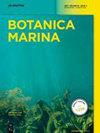南非西海岸海带水产养殖的考虑因素:地理空间分析和研究意义
IF 1.4
4区 生物学
Q2 MARINE & FRESHWATER BIOLOGY
引用次数: 0
摘要
海带的商业利用在全球范围内继续受到关注。在一些东亚国家,海带养殖历史悠久,而南非的海带产业则以从天然海带林或海滩采集海带为主。本研究考察了南非西海岸海带水产养殖的潜力,重点关注三种本地海带物种:Ecklonia maxima、Laminaria pallida和Macrocystis pyrifera。根据自然栖息地条件、与其他用户的潜在冲突以及有利的土地使用因素,利用地理空间分析确定并评估了九个可能适合海带养殖的区域。对海带养殖机会的市场、技术和财务方面的评估表明,在现有的贻贝或牡蛎养殖场附近建立一个 4 公顷的海带养殖场,使用延绳每年生产 750 到 1,000 吨新鲜海带,作为一项综合水产养殖活动是可行的。我们建议对南非的海带水产养殖进行详细的可行性研究,包括市场和技术研究以及财务建模。当前的海藻产业立法主要涉及野生资源,需要制定与海藻养殖相关的具体政策,以促进该产业的发展。本文章由计算机程序翻译,如有差异,请以英文原文为准。
Considerations for kelp aquaculture on South Africa’s west coast: geospatial analysis and research implications
The commercial use of kelp continues to gain interest worldwide. While in some East Asian countries kelp farming has a long history, the kelp industry in South Africa is based on harvesting of kelp from natural kelp forests or by beach-cast collection. This study examined the potential for kelp aquaculture on South Africa’s west coast, focusing on the three indigenous species of kelp, Ecklonia maxima , Laminaria pallida and Macrocystis pyrifera . Geospatial analysis was used to identify and assess nine potentially suitable areas for kelp farming, based on natural habitat conditions, and examination of potential conflicts with other users and enabling land-use factors. An assessment of the market, technical and financial aspects of a kelp farming opportunity indicated that a 4 ha kelp farm, with longlines producing 750 to 1,000 t of fresh kelp per annum, could be viable as an integrated aquaculture activity adjacent to an existing mussel or oyster farm. We recommend a detailed feasibility study for kelp aquaculture in South Africa, with market and technical research, and financial modelling. Current seaweed industry legislation is mostly concerned with the wild resource, and there is a need for specific policies relating to seaweed aquaculture to facilitate growth of the industry.
求助全文
通过发布文献求助,成功后即可免费获取论文全文。
去求助
来源期刊

Botanica Marina
生物-海洋与淡水生物学
CiteScore
4.10
自引率
4.50%
发文量
43
期刊介绍:
Botanica Marina publishes high-quality contributions from all of the disciplines of marine botany at all levels of biological organisation from subcellular to ecosystem: chemistry and applications, genomics, physiology and ecology, phylogeny and biogeography. Research involving global or interdisciplinary interest is especially welcome. Applied science papers are appreciated, particularly when they illustrate the application of emerging conceptual issues or promote developing technologies. The journal invites state-of-the art reviews dealing with recent developments in marine botany.
 求助内容:
求助内容: 应助结果提醒方式:
应助结果提醒方式:


